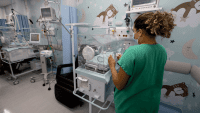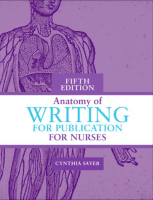Last month, while attending the annual meeting of the New York State Nurses Association (NYSNA) in New York City, I was reminded of the role that city played in the formation of the American Nurses Association (ANA). In 1896, a group of nurses traveled to New York to address the lack of practice standards and formed what became the ANA.
How much has changed since then as we continue to improve our practice standards, patient care, and our working conditions? As I listened to the wonderful educational sessions at the NYSNA meeting, I tried to imagine the discussions that must have occurred at the first ANA meeting more than a century ago. Think of how much resolve to improve conditions those nurses must have had!
Because nurses serve at the intersection where direct patient care is provided, we sometimes avert bad patient outcomes through monitoring and diligence—or simply through our presence. These actions have an intended consequence. Without them, significant unintended consequences can occur.
The high standard of care you provide, along with your particular skill set, helps ensure an optimal outcome. Why is this important? When friends, neighbors, or relatives tell me they’ve been in the hospital, I always ask what they thought of the nursing care they received. I always get a response—in some cases a lengthy and less-than-positive one.
Last month, I asked you to select one standard of nursing practice and the accompanying measurement criteria. Did you select Standard 7: Quality of Practice? This standard highlights quality improvement activities for the nurse: The registered nurse systematically enhances the quality and effectiveness of nursing practice.
In the early 1990s, ANA funded multiple studies to identify linkages between nurse staffing and patient outcomes. As a result, 10 nursing-sensitive indicators were identified, and in 1998 the National Database of Nursing Quality Indicators (NDNQI®) was established.
A comprehensive approach to evaluating quality uses structure, process, and outcome indicators; the NDNQI® was founded on this approach. Of the 10 original nursing-sensitive indicators, those for skill mix, nursing hours, patient falls, pressure ulcers, and registered nurse (RN) satisfaction have been fully developed and tested and make up part of the database. A restraints indicator was just recently added and new indicators are under development, including RN voluntary turnover.
When evaluating the quality and effectiveness of nursing practice, think of what your staffing was like. For patients who fell, what percentage had a risk assessment performed 24 hours before the fall? What fall prevention protocols are in place? How do these interventions get recorded in the patient’s chart?
All of these elements are important in determining patient outcomes, improving the quality of care, and ensuring patient safety. What trends do you see in the care you provide? What improvements need to be made? How are you evaluating your practice? How is your facility evaluating its practices? Nurses can directly affect patient outcomes and ensure patient safety.
In August 2006, NDNQI® reached a milestone—more than 1,000 facilities now participate in the database! And the number keeps growing. This rich database identifies critical nursing and patient care efforts that affect patient outcomes and patient safety. It’s the only national nursing database that provides this information where care occurs—at the unit level—and supplies comparisons based on hospital size and unit type.
As part of this growth, ANA will hold a groundbreaking NDNQI® National Data Use Conference in Las Vegas on January 30 and 31, 2007. One of our plenary speakers will be Dr. Janet Corrigan, President of the National Quality Forum, which approved 15 nursing-sensitive indicators through its consensus measure process.
As you reflect on your work experiences, make a commitment to create new ones that are enhanced by NDNQI® data. Remember—your actions have a direct impact on how patients describe their care experience to neighbors, friends, and relatives. Keep in mind that routine daily nursing activities—such as turning patients every 2 hours and reassessing patients after providing pain medication—directly affect patient outcomes. I challenge you to recognize the importance of these routine activities and not to minimize their significance or importance.
I also invite you to learn more about the NDNQI®. To join us for the groundbreaking Las Vegas conference, visit www.nursingworld.org and register online. Your patients deserve it, and so do you.
Rebecca M. Patton, MSN, RN, CNOR
President
American Nurses Association

















